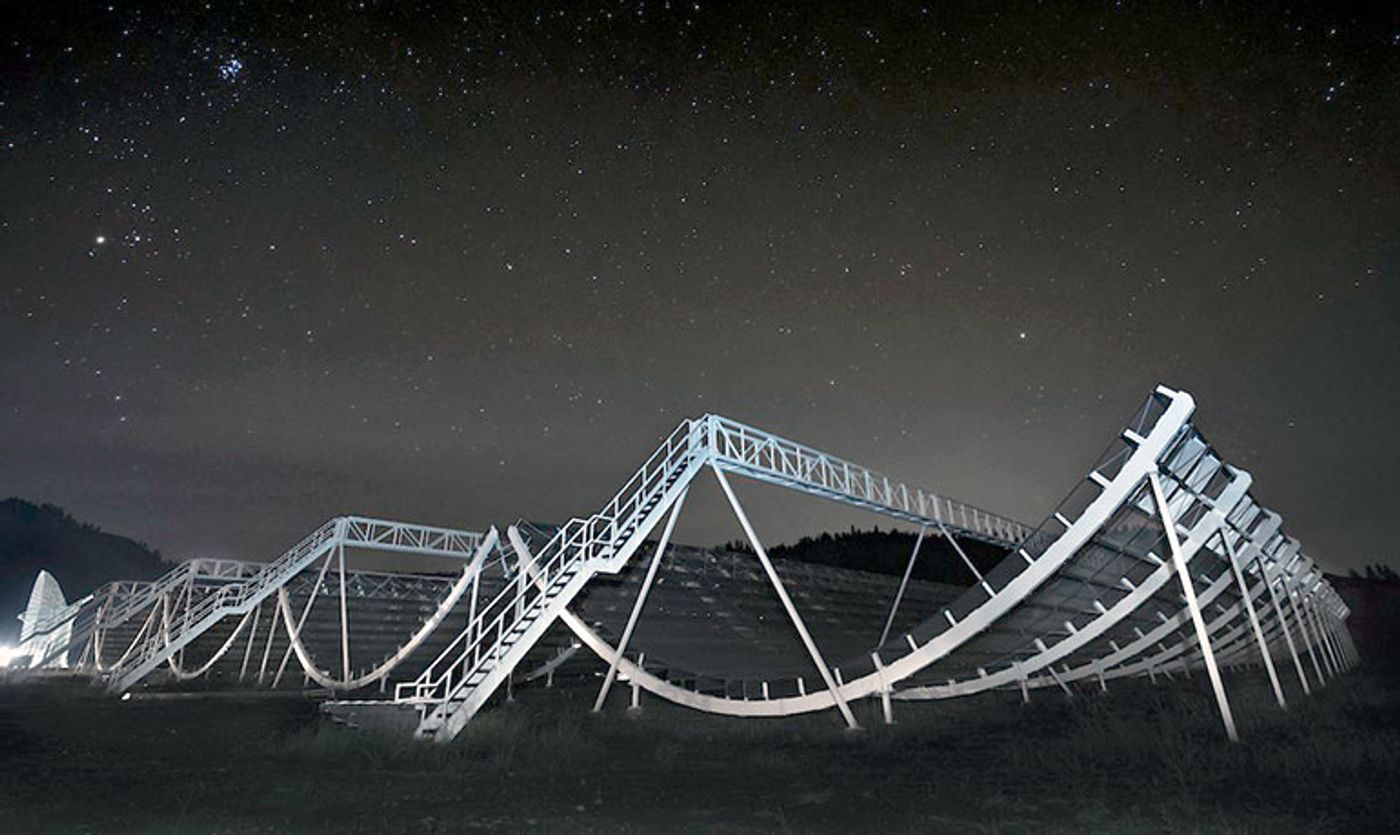Second Repeating Fast Radio Bursts Detected
Scientists working at Canadian Hydrogen Intensity Mapping Experiment, or CHIME, announced that they have detected a total of 13 fast radio bursts in July and August 2018. What's more intriguing, one of them is a repeating burst, the second of its kind since the discovery of the phenomenon back in 2007.
For astrophysicists, fast radio bursts are bright, broadband but short-lived flashes originated from point-like sources from space. Lasting no more several milliseconds, they are captured by radio telescopes that are positioned toward a certain part of the sky.
Assisted by its low-noise amplifiers and sensitive radio receivers, the CHIME telescope conducts precise measurements of neutral hydrogen power spectrum across the redshift range, in order to allow scientists to study the expansion of the Universe. Aside from its main mission, CHIME also is involved in monitoring transient radio signals from astrophysical entities such as pulsars.
FRB 010724 (also known as the Lorimer Burst) is the first fast radio burst ever detected. It was discovered by accident in 2007 when astronomer Duncan Lorimer and his student were going through archived telescope data taken back in 2001.
Although the cause of fast radio bursts is highly debatable (which many scientists hypothesized to be high-energy astrophysical processes outside our galaxy, since most signals are highly magnetized but weak in strength), the advent of the first repeated burst, FRB 121102, stirred up the speculation that it could have originated from a beacon built by extraterrestrial intelligent life forms.
When combing through data from May and June 2015 collected by the Arecibo Observatory in Porto Richo, Canadian astronomer Paul Scholz found ten non-periodically repeated pulses in an hour, a feature resembling no others. In a later analysis using a convolutional neural network, the total counts for the repeated signal got bumped up to 72 bursts in a window of five hours.
The discovery of a second repeated burst signal gave an exciting boost of confidence to the researchers working at the CHIME/FRB Collaboration.
"We certainly hoped that the CHIME telescope was going to be able to discover a lot of fast radio bursts. And we had the good luck to find 13 of these things in the pre-commissioning phase," said astrophysicist Ingrid Stairs, a CHIME team member, in an interview with the Canadian Broadcasting Corporation.
Their discovery was recently published in the journal Nature.
New CHIME radio telescope will help unravel today’s biggest cosmic mysteries (UBC Media)
Source: CBC









